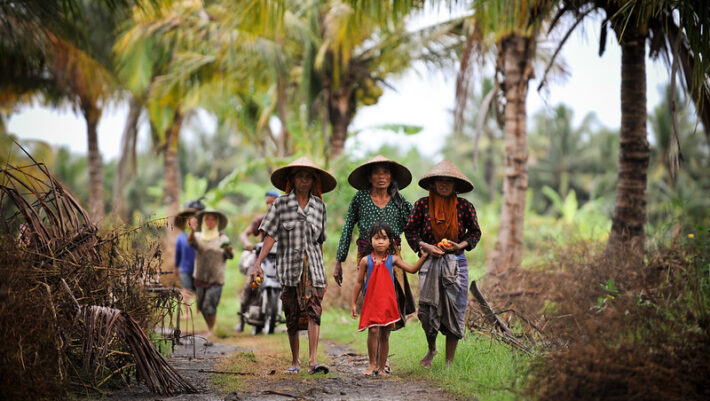Yield advantage and economic performance of rice–maize, rice–soybean, and maize–soybean intercropping in rainfed areas of Western Indonesia with a wet climate
- From
-
Published on
14.11.22
- Impact Area

The goals of smallholders in rainfed areas are generally to reduce risks, generate income, and achieve food security. These goals, to some extent, could be achieved by practicing intercropping. Farmers could more effectively utilize their land area and time and thus increase their income and production efficiency by practicing intercropping, especially if adopting maize–soybean and rice–soybean intercropping systems.
Many diverse cropping systems have increased food production and farmers’ incomes in Africa, India, and China. One of these systems is intercropping, i.e., growing two or more crop species simultaneously in the same field during a growing season.
Efficient utilization of land resources, where scarcity of land compels farmers to grow many crops on a small piece of land, is one of the rationales for intercropping in traditional farming systems. Recent research has raised several concerns about the future sustainability of rice–maize cropping systems. Yield growth rates have slowed and reached a plateau in some significant rice-producing regions including Indonesia, representing a potential issue in meeting future rice demand, which is expected to increase.
Due to its limited land for food production and high population, Indonesia is testing various methods in an attempt to increase the production of food crops, especially rice, maize, and soybean. Maize and soybean are the second and third most important strategic commodities after rice. Rice–maize intercropping systems are crucial in ensuring food security. Rice–soybean or maize–soybean combinations provide food and nutritional security to smallholders of rainfed lands. Thus, they may be considered suitable options for small farmers’ food and livelihood security.
Related news
-

Reinventing Kenya’s Snack Future with Dryland Grains
International Crops Research Institute for the Semi-Arid Tropics (ICRISAT)21.11.25-
Nutrition
-
Poverty reduction, livelihoods & jobs
Faces of Impact - Video Feature Story On a quiet backstreet in Mihango, Kenya, the…
Read more -
-

ICRISAT’s Solar-Powered Water Hyacinth Harvester Recognized Among India’s Top 100 Innovations of 2025
International Crops Research Institute for the Semi-Arid Tropics (ICRISAT)18.11.25-
Environmental health
-
Poverty reduction, livelihoods & jobs
ICRISAT's Novel Solar-Powered Water Hyacinth Harvester has now earned a place in the prestigious To…
Read more -
-

Australia partners with International Livestock Research Institute to upskill researchers from Africa and Asia
International Livestock Research Institute (ILRI)13.11.25-
Food security
-
Poverty reduction, livelihoods & jobs
Australia has joined forces with the International Livestock Research Institute (ILRI) to support th…
Read more -
